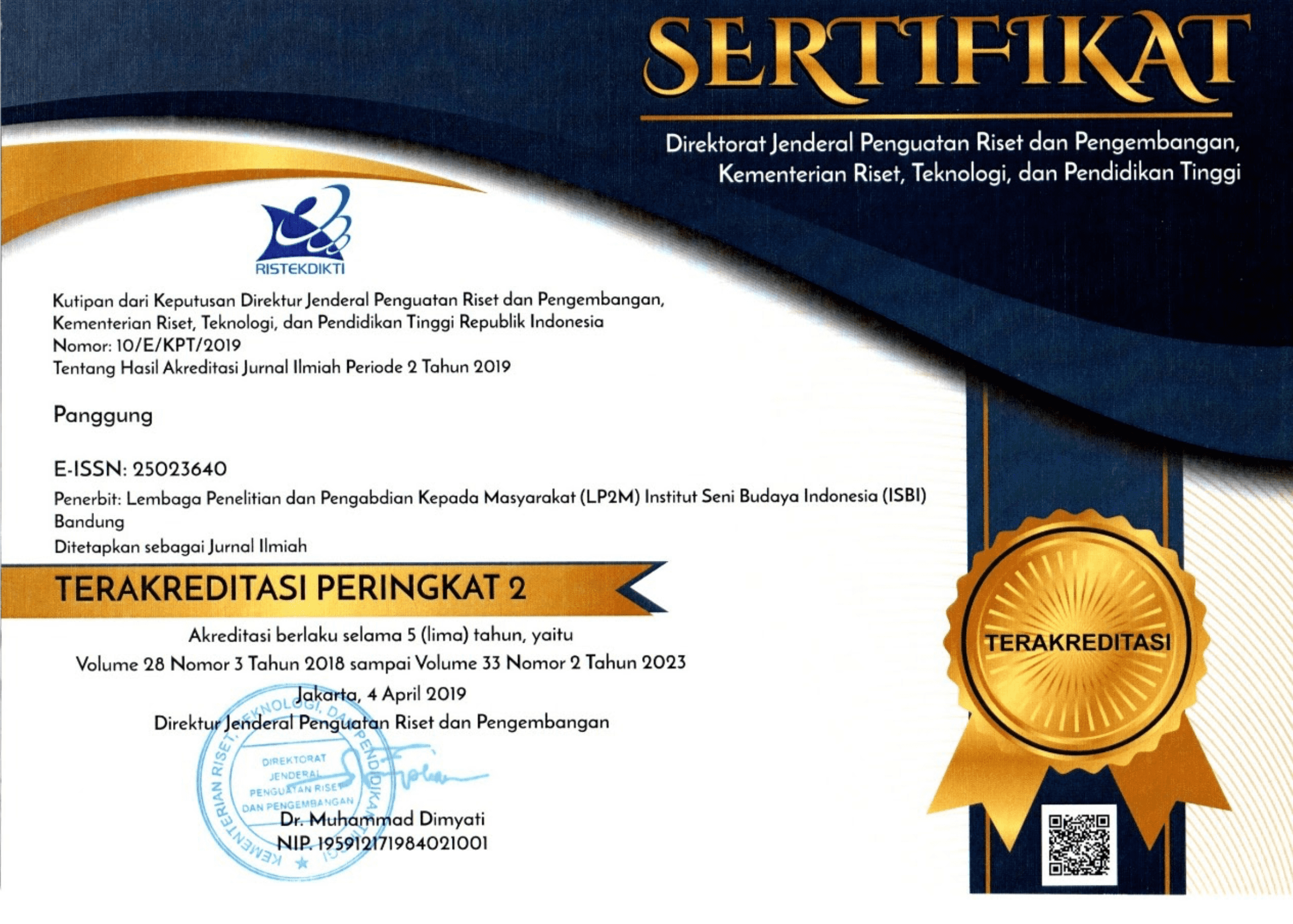Vol. 27 No. 2 (2017): The Revitalization of Tradition, Ritual and Tourism Arts

The theme of Panggung in this edition is Revitalisasi Tradisi, Ritual dan Seni Pariwisata (The Revitalization of Tradition, Ritual and Tourism Arts). The theme refers to the variety of topics presented in nine articles covering visual art, traditional ritual management, tourism arts, traditional leadership and traditional rituals.
Related to tourism arts, Hersapandi emphasizes the importance of Roro Joggrang's ballet dance in a tourism package, which is very potential to increase tourist visit at Prambanan Temple. Meanwhile Sukistono uses the object of wayang golek in Yogyakarta to emphasize the importance of revitalizing the tradition to be presented to tourists. Related to the theme of traditional leadership, Suhaenah et al explores the Babarit tradition management form at Serentaun ceremony in Cigugur Kuningan, while Engkus took a case study of Panengen culture in Rancakalong in questioning the issue. Furthermore, Restela and Narawati take the case of Rampoe dance to describe the cultural characteristics of Acehnese society, including in relation to traditional leadership.
In the field of fine arts, Zwain and Bahaudin observe the development of eclectic style at shop houses by taking a case study at Sun Yat Sen museum in Penang Malasyia. Meanwhile, Pandanwangi and Damayanti analyze the visualization of women in traditional Chinese paintings. Furthermore, in relation to traditional ceremonies, Rizal and Anwar discuss the function of art and culture in Rancakalong, Sumedang as a medium to increase the development of food system, while Fahmi, Gunardi and Mahzuni examine the functions and myths in the Nyangku custom ceremony in Ciamis, West Java.




